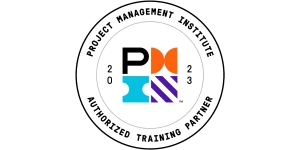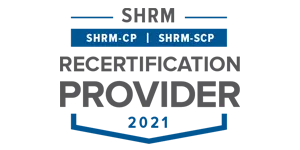Get your Lean Six Sigma Project Certification
While training lays the foundation, Lean Six Sigma Project Certification is what validates your ability to use these tools effectively in real-world scenarios to achieve tangible, measurable outcomes.
Lean Six Sigma Project Certification is the formal process by which 6Sigma.us reviews, acknowledges, and certifies the successful completion of an authentic improvement project.
This project must clearly demonstrate the application of the DMAIC methodology (Define, Measure, Analyze, Improve, Control) and the appropriate Lean Six Sigma tools, typically undertaken by individuals who have completed our Green Belt or Black Belt training programs.
Think of it as the ultimate demonstration of your applied Lean Six Sigma competence – moving from theory to impactful practice.
Why Pursue Project Certification?
Completing and certifying a Lean Six Sigma project offers profound benefits, transforming your training into a testament of practical achievement.
For Organizations
- Real ROI on Training: Lean Six Sigma project certification ensures your training investment translates directly into actual business improvements. It’s the mechanism to capture real project ROI, whether through cost savings, enhanced efficiency, improved quality, or increased customer satisfaction.
- Develops True Problem Solvers: Through the process of completing a real-world Lean Six Sigma project, employees learn to tackle and solve genuine organizational challenges, developing critical thinking and analytical skills that are invaluable.
- Validates Competency & Training Investment: It provides concrete evidence that your employees can effectively apply the Lean Six Sigma tools and methods they were taught, thus helping to validate your training investment.
- Builds a Culture of Improvement: Each successful, certified project serves as an internal success story, inspiring further initiatives and fostering a broader culture of continuous improvement across the organization.
- Measurable Impact: Certified projects, by their nature, must deliver documented, measurable results. This provides clear metrics on the impact of your Lean Six Sigma deployment and the capabilities of your certified personnel.
For Individuals
- True Skill Demonstration: Project certification moves you beyond theoretical understanding. It allows you to demonstrate Lean Six Sigma skills in action, proving you can apply complex tools and methodologies to solve real problems.
- Enhanced Credibility: A successfully certified project adds significant weight and credibility to your Green Belt or Black Belt credential. It’s tangible proof that you can deliver results.
- Resume Differentiator: In a competitive job market, project certification sets you apart. It clearly distinguishes you from candidates who may only have exam-based certifications, highlighting your practical experience.
- Increased Confidence: There’s immense satisfaction and confidence gained from successfully navigating a project from definition to control. This experience builds self-assurance in your problem-solving abilities.
- Tangible Portfolio Piece: Your certified Lean Six Sigma project becomes a powerful case study – a concrete example of your analytical skills, leadership (for BBs), and ability to drive change that you can share with current and potential employers. It helps you validate Lean Six Sigma skills in a compelling way.
Project Certification Requirements & Evaluation
To ensure your Lean Six Sigma Project Certification truly reflects your understanding and ability to apply learned concepts, 6Sigma.us has established clear requirements for project submissions.
Our review process is designed to confirm that you have effectively utilized the methodologies to achieve meaningful results.
Core Elements We Evaluate in Your Project Submission:
At a minimum, your project should demonstrate proficient use and understanding of the following, as applicable to your project and Belt level (Green or Black Belt):
- Process Maps: Clear illustration of the process, potentially including process flow diagrams, swimlane diagrams, SIPOC (Suppliers, Inputs, Process, Outputs, Customers) diagrams and High-Level Process Maps.
- C&E Matrix (Cause & Effect Matrix): If utilized, a demonstration of how potential causes were prioritized.
- FMEA (Failure Modes and Effects Analysis): Application of FMEA to identify and mitigate potential risks in the process or proposed solutions.
- Data Analysis: Proper analysis of the initial process performance, including graphical representations and appropriate and statistical tools (e.g., ANOVA, Regression, Graphical Tools relevant to your Belt level).
- MSA (Measurement System Analysis): An MSA should be conducted to validate your measurement system. If an MSA is not performed, a clear explanation of why it wasn’t required and how the data’s accuracy and reliability were otherwise verified must be provided.
- Capability Studies: Analysis of process capability both for the baseline performance and after improvements have been implemented.
- DOE (Design of Experiments): If needed for the project, evidence of proper planning, execution, and analysis of any DOE.
- Improvement Plan and Results: A clear plan detailing how the proposed improvements were implemented, and results of Hypothesis Tests comparing baseline performance against current performance.
- Control Plan: A well-thought-out Control Plan detailing the Who, What, and When for sustaining the improvements, as well as actions to be taken if an issue arises.
Key Focus Areas for Your Project
- Demonstrating a Lean/Six Sigma Mentality: We look for evidence that you approached the problem differently than you might have before your training, applying Lean thinking and utilizing appropriate methods and tools to make a noticeable improvement in a real-world process.
- Clear Evidence of Improvement: Your submission must clearly document that the process was improved as a result of your project or series of events. It’s strongly recommended that improvements are shown in a clearly defined and measurable format, comparing “before” and “after” results, preferably including associated cost savings or other quantifiable benefits.
- Project Source Flexibility: While many projects come from a workplace environment, successful projects have also been completed in volunteer organizations, charities, hobby groups, and other areas. The key is the application of the methodology.
- Logical Presentation: There’s no single mandated project format, though a clear presentation that allows the reviewer to follow your logical path is crucial. PowerPoint presentations often work well, organized using the DMAIC roadmap and highlighting the appropriate Lean and Six Sigma tools used to solve the problem.
These requirements are in place to ensure the integrity and value of your Lean Six Sigma Project Certification, confirming you are a capable practitioner ready to drive impactful change.
How a Successful Project Certification Looks Like?
To achieve Lean Six Sigma Project Certification with 6Sigma.us, your submitted project must demonstrate a proficient application of the methodologies and tools learned during your Green Belt or Black Belt training. We look for several key criteria that define a successful Lean Six Sigma project:
- Clear Application of the DMAIC Methodology
The project must logically follow the Define, Measure, Analyze, Improve, and Control phases. Each phase should be distinctly addressed with appropriate activities and deliverables.
- Well-Defined Project Scope with Clear Objectives
The project must have a clearly defined project scope – what problem is being addressed, and what are the boundaries? Objectives should be SMART (Specific, Measurable, Achievable, Relevant, Time-bound).
- Effective Use of Relevant Lean Six Sigma Tools
Demonstrate the practical application of Lean Six Sigma tools and techniques appropriate for your certification level (Green Belt or Black Belt). This includes tools for process mapping, data collection, statistical analysis, root cause identification, solution generation, and process control.
- Measurable Improvements (Quantifiable Results)
A cornerstone of any successful project is the achievement of measurable results. Improvements must be quantified, whether in terms of financial savings, cost reduction, defect reduction, cycle time improvement, increased efficiency, enhanced customer satisfaction, or other key operational metrics.
- Demonstration of Data-Driven Decision-Making
Decisions made throughout the project, particularly in the Analyze and Improve phases, must be supported by data and sound statistical reasoning, not just assumptions or opinions.
- Evidence of Thorough Root Cause Analysis
The project must clearly show that a systematic approach was used to identify and verify the true root cause(s) of the problem, rather than just addressing symptoms.
- Sustainable Solutions and Control Plan Basics
The implemented solutions should be designed for sustainability. The project documentation should include elements of a control plan to ensure that the gains achieved are maintained over time.
- Clear Documentation and Presentation
The project must be documented clearly and professionally, typically in a storyboard format or comprehensive report. The presentation should logically narrate the project journey, analysis, findings, and results, making it easy for reviewers to understand your process and impact.
Meeting these criteria ensures your project not only delivers value but also robustly demonstrates your competence as a certified Lean Six Sigma practitioner.
Project Certification Support & Resources
Undertaking Lean Six Sigma project for certification can be a challenging yet incredibly rewarding experience. That’s why we provide robust Lean Six Sigma project resources and dedicated support to help you bridge the gap between theoretical knowledge and practical application successfully.
Here’s how we offer Lean Six Sigma project certification coaching and mentor support:
- Mentorship: A 6Sigma.us, a Master Black Belt will be assigned to support you when you need them. Please contact info@6sigma.us when you are ready for your Mentor. You can also reach out with any training or project-related questions.
- When to Start: The timing for starting your project is flexible. Some candidates with a clear project in mind begin during their training, while many prefer to complete most or all of their training first.
- Initial Consultation: We recommend, at a minimum, going through the Project Define phase before formally engaging with your assigned Master Black Belt mentor. This allows for a more productive initial discussion and review of basic expectations for tollgate reviews.
- Completion Timeline: While the project review and certification itself may not have a strict expiration date (especially for certain programs like Lean Agent), we strongly recommend you complete and submit your first project within 6 months of finishing your training. This helps ensure the information and concepts are still fresh in your mind, leading to a more effective project experience.
Our goal is to empower you with the support and resources needed to not only complete your project but to do so in a way that maximizes its impact and solidifies your learning, leading to a meaningful and credible Lean Six Sigma Project Certification.
Ideas for Project Certification
Not sure what project to take on? We’ve got you covered with a wide list of project ideas sorted by department and industry. Whether you’re in healthcare, manufacturing, finance, education, or even working on personal productivity, there’s room for Lean Six Sigma to make an impact.
Here are just a few examples:
- Finance: Reduce time to process invoices or reconcile accounts
- HR: Improve onboarding efficiency or reduce employee attrition
- Sales: Increase proposal win rates or reduce quote turnaround time
- Healthcare: Cut emergency room wait times or reduce medication errors
- IT: Reduce help desk response times or improve system uptime
- Manufacturing: Decrease defect rates or shorten setup times
- Personal Projects: Improve fitness routines, reduce household expenses, or streamline chores
These certified project examples highlight the tangible impact that applying Lean Six Sigma methodologies can have when guided by effective training and dedicated project execution.
Lean Six Sigma Project Certification FAQs
Yes, for full 6Sigma.us certification, successful completion and certification of a real-world improvement project is a mandatory requirement. While you may receive a certificate of training completion after the coursework, certification is awarded only after demonstrating practical application through a validated project.
Your project should address a real problem within your organization, have a definable scope, offer potential for measurable improvement, and allow for the application of the DMAIC methodology and appropriate LSS tools for your belt level. We provide guidance on project selection during your training and through our mentorship support.
While specific timelines can vary (check your program guidelines), candidates are typically given a generous window, following the completion of their training, to submit their project for certification. We encourage timely completion to maintain momentum.
While financial savings are a common and impactful metric, project success isn't solely defined by them. Significant improvements in quality, efficiency, customer satisfaction, safety, compliance, or other key operational metrics are also highly valuable. The key is demonstrating measurable improvement and effective DMAIC application.
Not all projects achieve their initial ambitious targets, as it can be difficult to select an achievable goal at the start of the project. The certification focuses on your proficient application of the Lean Six Sigma methodology and tools. If you thoroughly executed the DMAIC process, used data to make decisions, and can clearly show a statistical improvement to the primary metric of the project, your project may still be considered. The review process emphasizes the quality of your work and understanding. Significant deviations or circumstances would require discussion with your MBB coach.
Typically, you'll need to submit a comprehensive project storyboard or report. This document should detail each phase of your DMAIC project, including the problem statement, goals, data collected, analysis performed, tools used, solutions implemented, results achieved, and control plan. We often provide templates or guidelines.
Your project will be reviewed by one or more of our highly experienced certified Master Black Belts. Our MBBs have extensive practical experience leading and mentoring numerous improvement projects across various industries, ensuring a thorough and knowledgeable review.
Generally, project certification is for work completed during or after your 6sigma.us training, applying the specific methodologies and tools taught in our program. Projects completed entirely before training may not align with our review criteria or allow for mentor guidance. Discuss any such scenarios with our program advisors beforehand.
The specific tools will vary depending on your project and belt level. However, reviewers will look for appropriate application of core DMAIC phase tools, such as process mapping, data collection planning, measurement system analysis (MSA), root cause analysis tools (e.g., Fishbone, 5 Whys, Pareto), statistical analysis appropriate for the data and belt level, solution generation techniques, and control planning tools.
Typically, one successfully completed and certified project is required for Green Belt or Black Belt certification. For Black Belt certification, the project is often more complex, with one demonstrating more advanced tool application. You do not need to complete a Green Belt certification prior to Black Belt certification, but it is recommended. Contact us to know more about the specific requirements for your chosen certification program.
Take the Next Step in Your Lean Six Sigma Certification Training
Take the next step to fully leverage the Lean Six Sigma knowledge.
Lean Six Sigma Project Certification is the key to turn theoretical understanding into a validated, recognized accomplishment that delivers real-world impact for you and your organization. Don’t just learn the tools – prove you can use them.
Get project certified and solidify your status as a capable Lean Six Sigma practitioner.
If you’re enrolled in or considering our Green Belt training, learn how to integrate project certification into your journey:
Explore Green Belt Certification —>
For our Black Belt candidates, discover the path to certifying your expert-level project and demonstrating true mastery:
Explore Black Belt Certification —>
Have questions about selecting a project, the review process, or how project certification fits into your specific Green Belt or Black Belt program? Talk to us!









